Body material: Aluminum(GB-ADC12)+PC(Japan Brand)
Power supply: USA Brand High Efficient Solar Panel
Battery: NI-MH1.2V/600MAH; Lithium battery3.2V/500MAH(Made in Japan);
Resistance: >30T
LED Color: White, Yellow, Blue, Red, Green
Size: L125mm*W107mm*H26+50mm
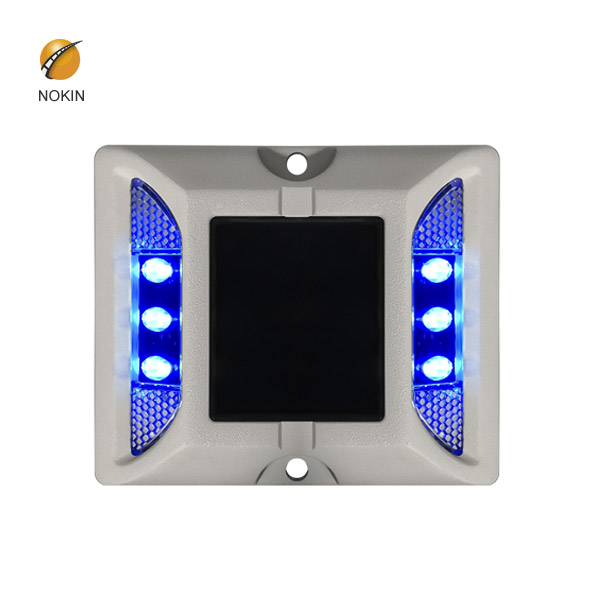
Body material: Casting Aluminium alloy +PC
Power supply: 5V/80MAH Mono crystalline silicon
Battery: Lithium battery3.2V/1000MAH
Resistance: >40T(can be installed in the middle of road)
LED Color: White, Yellow, Blue, Red, Green
Size: φ125*50mm
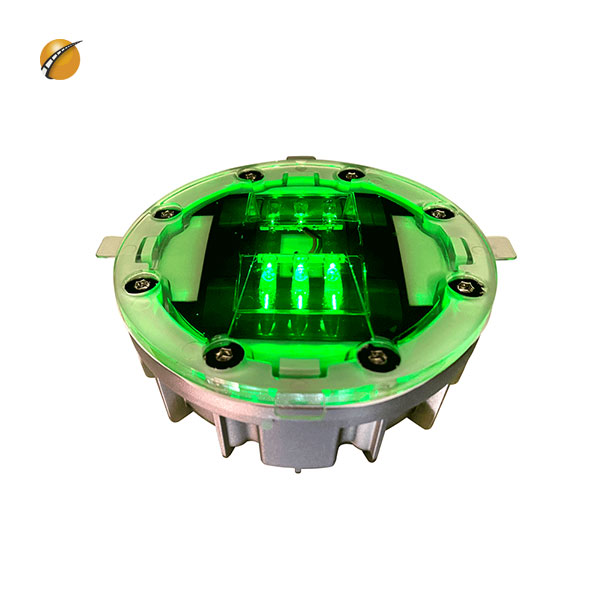
Body material: Hi-pressure Casting Aluminium alloy
Power supply: Solar panel(monocrystalline 2.5V/0.2W)
Battery: NI-MH 1.2V/800MAH or lithium battery
Resistance: >20T(static)
LED Color: White, Yellow, Blue, Red, Green
Size: L104*W104*H20mm

Body material: ABS
Filling: Epoxy+Quartz
Lens Material: PMMA
Colors: White, Red, Yellow, Green, Blue
Size: 100*100*18mm

Body material: ABS
Reflector type: Double side/Single side
Lens Material: PMMA
Colors: White, Red, Yellow, Green, Blue
Size: 116*82*18mm
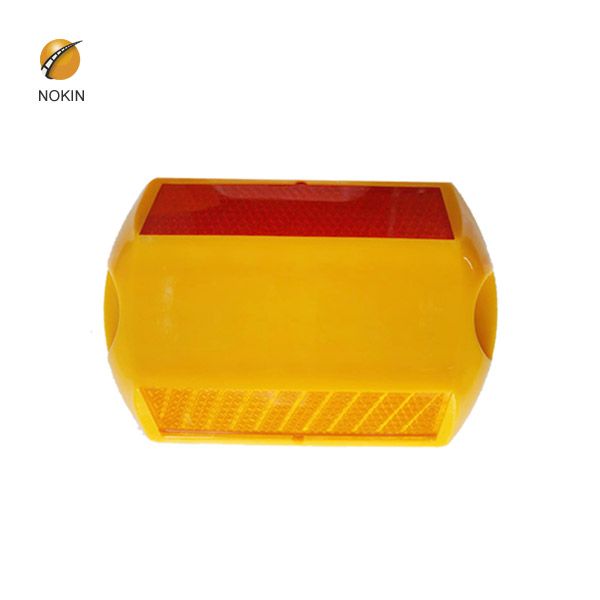
Body material: Aluminium
Filling: Epoxy+Quartz
Lens Material: PMMA
Colors: White, Red, Yellow, Green, Blue
Size: 100*100*20+50mm
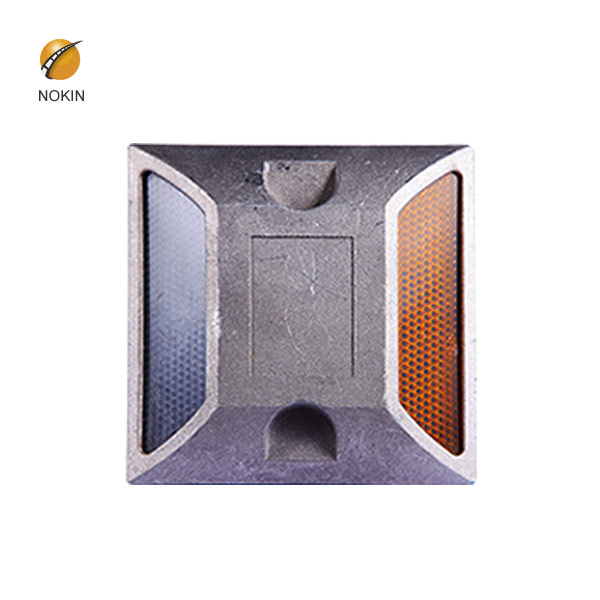

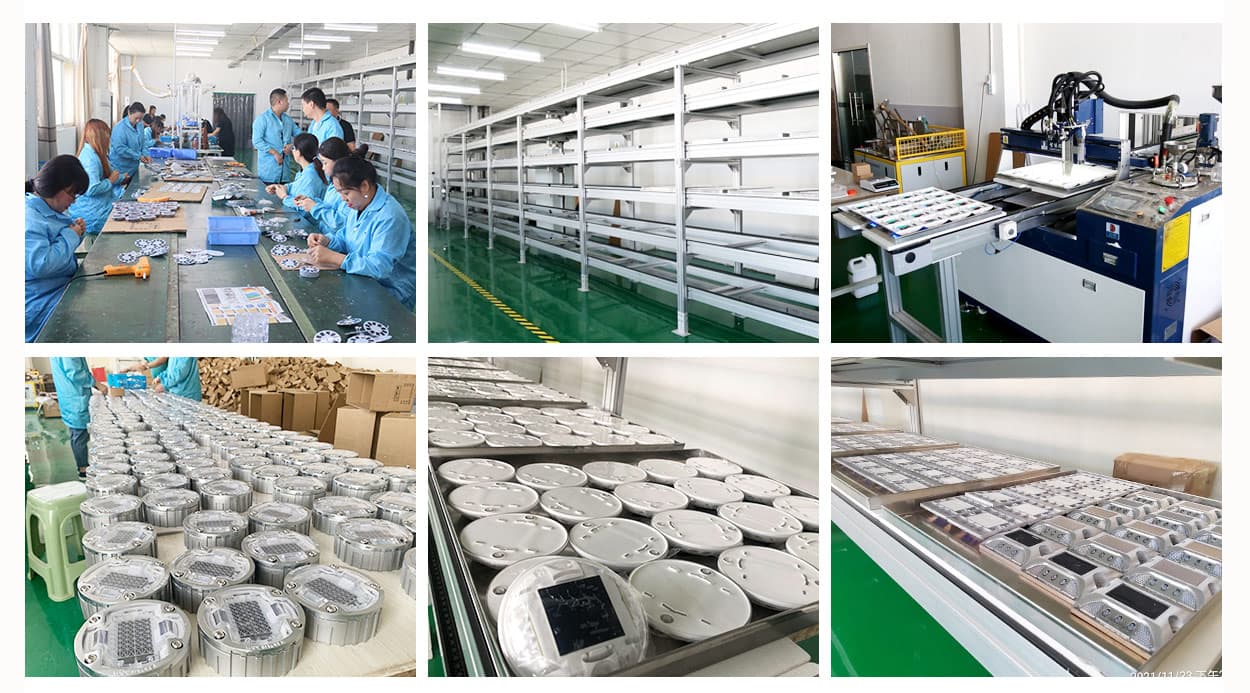

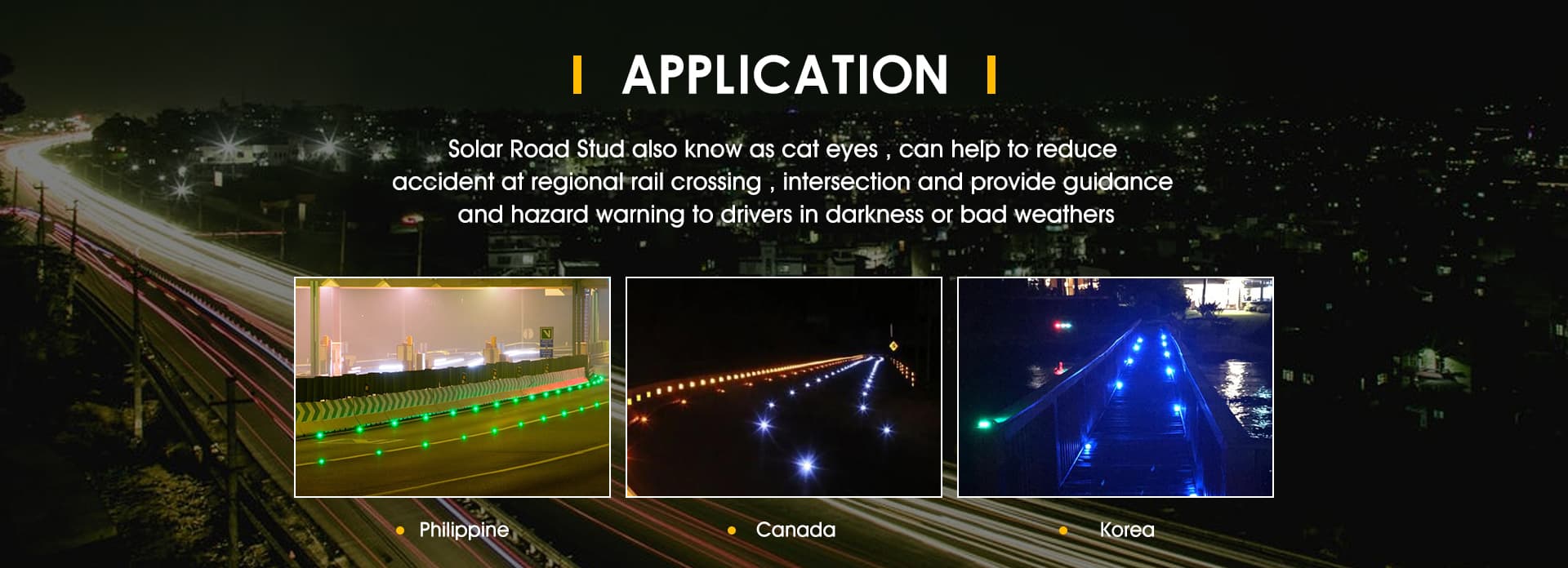
.jpg)
White studs mark the lanes or the middle of the road. Red studs mark the left edge of the road. Amber studs mark the central reservation of a dual carriageway or motorway. Green studs mark the edge of the main carriageway at lay-bys and slip roads. You might see green studs on motorway most often. Green/yellow studs show temporary adjustments
.jpg)
1. Red Cat's Eyes Studs are a Sign that Ought to Slow Down Red motorway reflective studs are typically places along the shoulder of both dual carriageways and motorways. They are a good way of telling when you're about to veer off the road especially on a poorly hill crest.
.jpg)
Red markers — These are found by the hard shoulder on motorways and at the edge of the running surface on other roads. They are also occasionally used to indicate a no-entry road and when travelling down the wrong way of the motorway/dual carriageway.
.jpg)
Studying the Studs NOKIN™ Marker Series 290 roadstuds have been used on a 24km stretch of brand new motorway in Ireland, which opened in March 2010. The construction of a major inter-urban route connecting Dublin and Waterford is a key part of the Irish government’s strategy for economic growth and road safety improvements. This project moved
.jpg)
Detailed information on every motorway and A-road expressway in mainland Britain - its length and route, its history, construction dates, and of course a detailed strip-map of the whole road. You can also find Chronology Maps showing the development of the motorway network over time, and you can search more than 2,000 individual junctions and
.jpg)
Without sufficient number of road lightings, it is necessary to provide some means to guide the drivers along dark roads. Hence, in 1933 Percy Shaw invented the cat’s eye (i.e. road studs) which is based on the principle of cat’s eyes. When a ray of light enters the eyes of a cat, the light shall be reflected back towards to the emitting
.jpg)
Earth Man Infra - Offering Red ABS Body Road Studs at Rs 50/number in Hyderabad, Telangana. Read about company. Get contact details and address | ID: 7966810588
.jpg)
Nov 19, 2006 · Red if you're in the UK. "111: Reflective road studs may be used with white lines. * White studs mark the lanes or the middle of the road. * Red studs mark the left edge of the road. * Amber studs mark the central reservation of a dual carriageway or motorway. * Green studs mark the edge of the main carriageway at lay-bys, side roads and slip
.jpg)
Don't get tired. Statistics show that 15-20% of motorway incidents are caused by fatigue, so be prepared to stop for a break every two to three hours, and always find a safe resting place if you start to feel tired. Reflective Studs These will help you determine the road layout. Red - between hard shoulder and carriageway. White - between lanes.
.jpg)
You'll find it either on an overhead gantry, or increasingly on cantilever signs at the side of the road. What does the red X mean? Regardless of where you see the sign, either on a normal traffic lane or on a hard shoulder on a motorway hard shoulder, it simply means do not drive in the lane - it has been closed to traffic.
.jpg)
White studs mark traffic lanes or the centre of the road. The left-hand side of the carriageway is marked by red studs. The edge of the central reservation of a motorway or dual carriageway road is highlighted by amber studs. Green studs are used to mark lay-bys and the entrances to, and exits from, slip roads.
.jpg)
Reflecting road studs. Road studs delineate the edges of a carriageway or the division of traffic lanes. These help drivers at night or in poor visibility. White studs mark the lane lines and the centre of a road. Red studs mark the left edge of a carriageway. Amber studs mark the right edge of a carriageway adjacent to the central reservation.
.jpg)
RED: Marks the left edge of the road, showing that you should not cross the line. GREEN: Marks the edge of the carriageway where there are slip roads, parking bays and bus stops. WHITE: Marks the lanes or the middle of the road. AMBER: Marks the central reservation of the road, making you aware that you are on the extreme right lane available.
.jpg)
The red reflective studs are there to warn against exiting at that point, this is because that point is in fact a lane that is joining the motorway. Asked in Cars & Vehicles Where on a motorway
.jpg)
Reflective road studs are used to mark the lanes and edges of the carriageway. Each colour marks a different part of the road: white studs mark the lanes or the middle of the road; red studs mark the left edge of the road; amber studs mark the central reservation of a dual carriageway or motorway; green studs mark the edge of the main